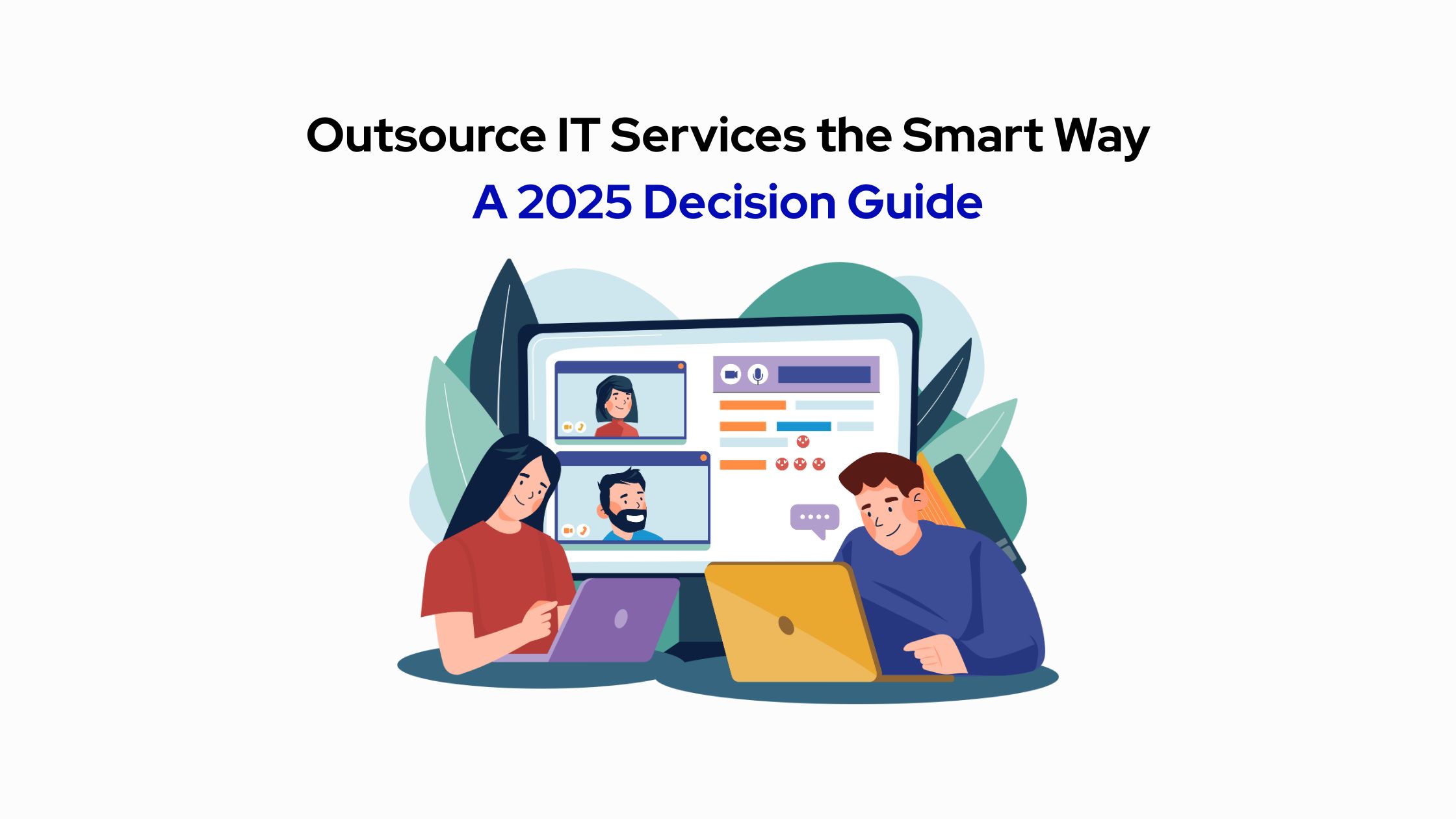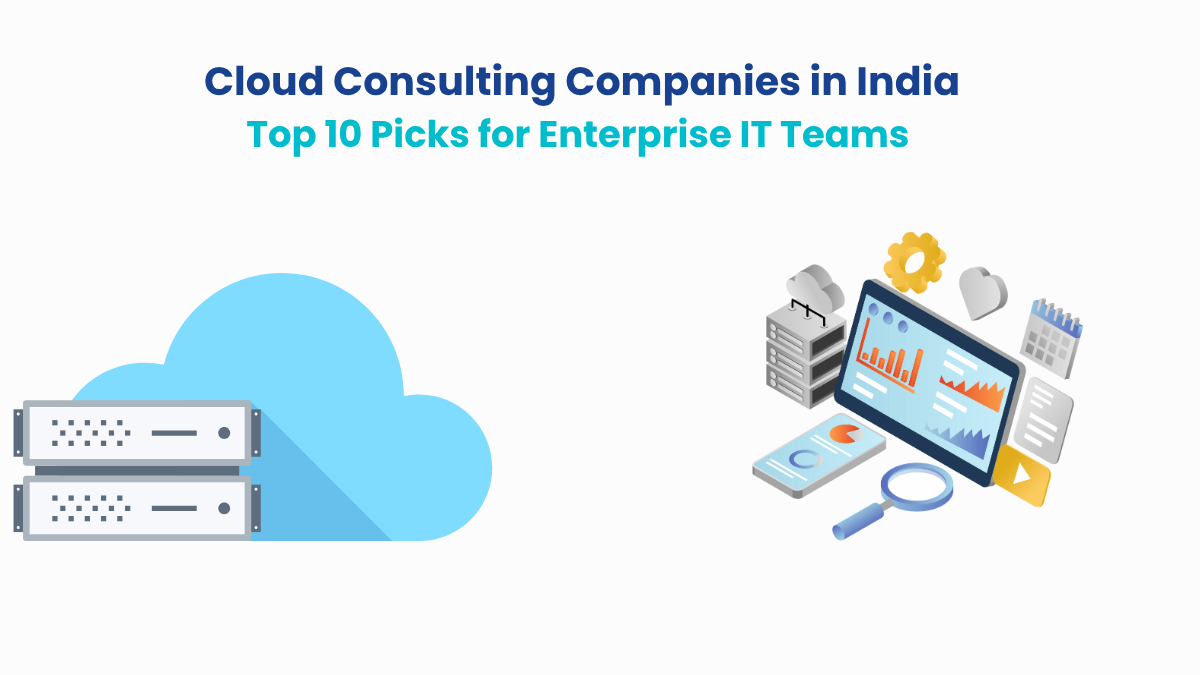There’s a moment every IT leader hits the point where patching delays, user complaints, and late-night outages start to feel less like problems. They start to feel more like symptoms of something deeper.
Despite having the tools and the team, there’s no breathing room. No bandwidth either to do it all. That’s when they stare down a decision that’s easy to delay but hard to ignore: Do we keep managing IT in-house, or is it finally time to outsource?
You’re not alone in asking this. In fact, you’re now in the minority. According to IDC’s 2025 research, 70 percent of companies are already leveraging managed IT services for efficiency and security.
That doesn’t mean outsourcing is the default. It just means it’s on the table for a reason.
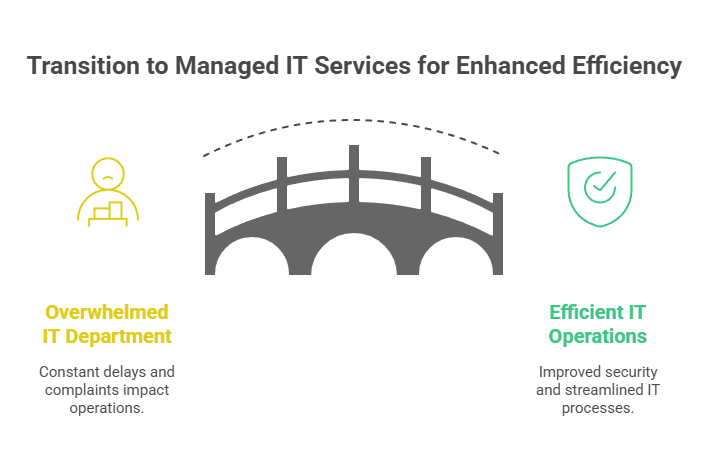
So what’s right for your organization? That’s what we will find out in this article. We’ll break down:
- The real-world tradeoffs of in-house versus outsourced IT.
- What actually improves (and what breaks) when you make the switch?
- Situations where outsourcing is a no-brainer and when it’s a trap.
Let’s cut through the noise and get to the truth. So you can make the kind of decision you don’t second-guess six months down the road.
Before we dive into the tradeoffs, let’s clarify what falls under managed IT services and what doesn’t.
What are Managed IT Services?
At its core, managed IT services involve delegating the operations, maintenance, and support of your IT infrastructure to an external partner. This can include:
- End-user support and helpdesk
- Server, storage, and network monitoring
- Patch management and asset lifecycle tracking
- Cloud infrastructure operations (AWS, Azure, GCP)
- Endpoint management and remote troubleshooting
- Backup and disaster recovery
- Service-level reporting and governance
It’s not consulting. It’s not security operations (that’s MSSP territory). And it’s not app development or project work. This is about keeping your core IT running reliably, predictably, and at scale.

In short, a good Managed Service Provider (MSP) doesn’t just “watch” your systems. They take full ownership of uptime, performance, and productivity. That way your internal team can focus on strategy, not firefighting.
The In-House IT Reality (And the Pressure It’s Under)
Most organizations don’t start by outsourcing IT. They build teams, select tools, and solve problems internally. These Internal IT teams know the business, the systems, and the people. But as infrastructure grows across cloud platforms, hybrid setups, and endless endpoints, keeping everything running smoothly becomes harder.
Routine tasks like patching, onboarding, and support can escalate quickly. Helpdesk queues lengthen. Asset tracking drifts. And cloud operations get more complex with every new tool added by different teams.
Today, most IT teams are stretched thin. They’re managing too much with fewer resources and little time for proactive work.
It’s no more a question of capability. It’s a question of capacity, and how long you can maintain it under pressure.
And that’s why more businesses outsource their IT services. Are you still in the dilemma of whether or not to outsource your IT services? If yes, the next couple of sections can get you the answers.
When Should You Outsource IT Services?
Did you know – many companies hesitate about outsourcing IT services, not because they don’t see the cracks. They hesitate because the shift feels like a leap, not a step.
However, there are certain moments in an organization’s growth where outsourcing becomes strategic. It relieves operational strain, improves service consistency, and gives your team the capacity to focus on the future, not just the queue.
Let’s look at six scenarios where outsourcing managed IT services makes practical, measurable sense.
#1. You’re scaling fast, but your IT operations aren’t
When the business grows – new locations, new teams, more users – IT complexity multiplies. Suddenly, provisioning machines, managing access, and supporting endpoints across geographies becomes a daily scramble.
Your in-house team might manage today, but growth compounds effort. What works at one scale often breaks at the next. Without automation, orchestration, or 24/7 support, service levels slip.
Outsourcing helps you scale IT operations in lockstep with business growth, without constantly expanding headcount or pausing everything to restructure.
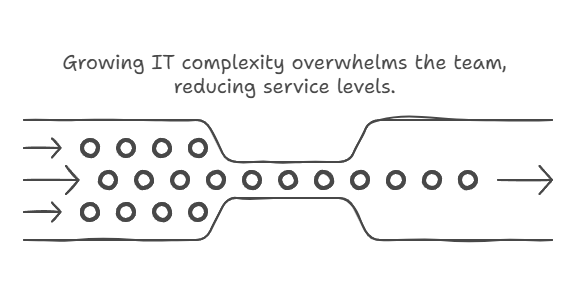
#2. Support queues are growing, and strategic work keeps getting postponed
If your team is constantly handling password resets, printer issues, and system access tickets, they’re not focusing on what actually moves the business forward. That means critical projects like system upgrades, automation, or cloud migration stay stuck in the backlog.
Outsourcing Tier 1 and Tier 2 support gives your internal team breathing room. They can refocus on architecture, modernization, and innovation, instead of just keeping the lights on.
To see how leading organizations are using automation and AI to alleviate SOC workload and reduce burnout, check out the Five Essential Steps to SOC Transformation eBook. It offers actionable strategies to modernize your operations while preserving your core IT team’s strategic focus.

#3. Your IT landscape has turned into a patchwork of tools and platforms
Over time, companies accumulate tools: monitoring software, endpoint agents, backup solutions, and more, often from different vendors.
Managing them all internally creates friction: mismatched alerts, integration gaps, and mounting overhead. Even diagnosing simple issues starts taking too long.
MSPs bring standardized tooling, unified dashboards, and platform-agnostic expertise. They can simplify your environment while improving visibility, accountability, and speed.
#4. You’re expected to provide 24/7 availability but don’t have a 24/7 team
Business doesn’t stop at 6 PM. With remote teams, global clients, or mission-critical applications, a 2 AM outage matters as much as one during business hours.
But building and retaining an internal 24/7 model is expensive and operationally hard to sustain. Outsourcing gives you always-on coverage, real-time response, and clearly defined SLAs without the cost or complexity of managing shifts, overtime, or on-call rotations.
#5. Compliance, audits, and reporting are becoming bottlenecks
As your organization grows, so do regulatory obligations, whether it’s DPDPA, ISO 27001, or internal governance audits.
If your team is pulling metrics manually from disconnected systems, it’s a sign they’re overextended. Outsourcing brings structured processes, automated reporting, and operational maturity that aligns with audit-readiness without derailing your core workload.
#6. Your top IT talent is burning out or walking away
Retention is one of the hardest and most expensive parts of running IT in-house. When your most experienced engineers spend day after day managing tasks that could be offloaded, disengagement sets in.
And when they leave, they take undocumented context and systems knowledge with them. Outsourcing relieves them from repetitive tasks and shows your internal team that their time and skills are valued.
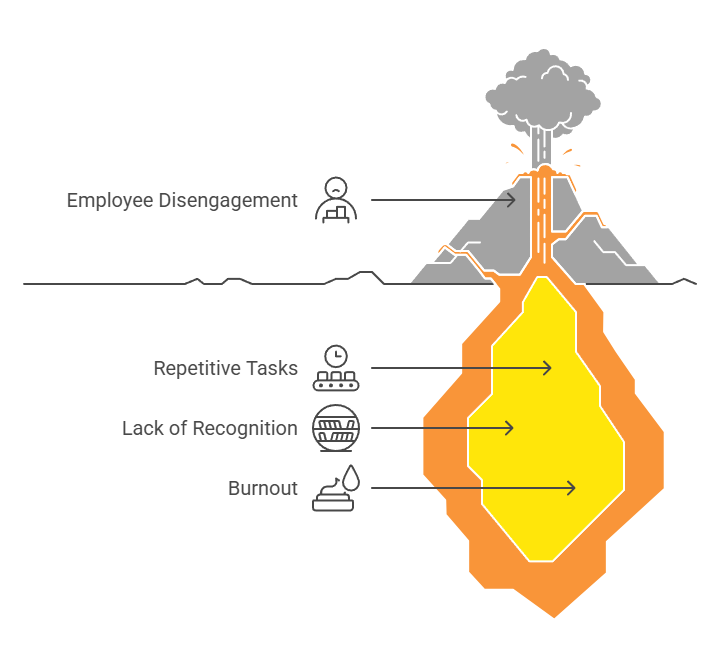
The above six scenarios cover the most common triggers that make outsourcing managed IT services a smart move. Of course, other factors like budget structure, vendor alignment, and organizational maturity also influence the decision.
But if your team is facing even two or three of these challenges, it’s worth exploring a shift. That being said, there are cases where keeping IT in-house makes more strategic sense. Let’s look at those next.
When does keeping IT In-House make Strategic Sense?
In some organizations, keeping IT fully in-house offers more control, better alignment, or simply a cleaner operational model. Below are four situations where managing IT internally is strategically smarter.

#1. When IT is your core differentiator
If your business is majorly technology, say you’re a SaaS company, a digital-first enterprise, or an infrastructure-led service provider then outsourcing day-to-day IT operations can introduce unnecessary friction. In those cases, your IT team isn’t just supporting the business. They are the business. Every tool you run, every system you build, every process you optimize is part of your customer experience. Or your competitive edge.
In-house IT lets you iterate faster, control your own stack, and embed engineering deeply into operations. You don’t have to depend on an external partner’s roadmap.
#2. When your environment is highly specialized or tightly regulated
Industries like aerospace, defense, pharmaceuticals, or critical infrastructure often operate within strict regulatory or technical boundaries. You may be running air-gapped networks, custom-built systems, or legacy workloads that can’t be easily documented, transferred, or accessed by third parties.
In these scenarios, the onboarding cost and security complexity of outsourcing may outweigh its benefits. A tightly controlled, deeply familiar internal team may simply be better suited to manage such environments safely and efficiently.
#3. When you have elite internal talent and mature IT governance
Some organizations have a stable, well-staffed, and highly capable IT function with strong internal processes, clear documentation, and strategic foresight. If your team is delivering consistently, keeping up with evolving demands, and already using modern ITSM, automation, and observability tools, the additional overhead of outsourcing might not add much.
In fact, outsourcing in such a case might slow things down or dilute accountability. When internal IT operates like a well-run MSP, there’s less reason to bring in someone else.

#4. When cultural or operational alignment is non-negotiable
In some companies, especially smaller or founder-led ones, the way IT works is deeply tied to company culture in terms of agility, personal relationships, and real-time decision-making. In such environments, adding a partner can create communication bottlenecks or misaligned expectations.
If your leadership relies on rapid response from IT, face-to-face collaboration, or tightly held institutional knowledge, outsourcing can feel like introducing distance where immediacy is valued. In these cases, it may be smarter to invest in scaling the internal team with support.
Outsource Managed IT Services or Keep It In-House? A Quick Comparison
We’ve explored the key scenarios where outsourcing shines. We have also looked at where staying in-house makes more sense. But if you’re still weighing the tradeoffs, this quick side-by-side can help clarify which model fits your current state and strategic goals.
Decision Matrix: In-House vs. Outsourced IT Management
| Decision Factor | In-House | Outsourced |
| Control over daily operations | High – full visibility and direct intervention | Lower – depends on SLA and partner transparency |
| Responsiveness to internal teams | Very high, especially in close-knit orgs | Variable, depends on partner process and escalation paths |
| Access to skilled IT specialists | Limited to your hiring capacity | Broad – deep bench of multi-domain experts |
| 24/7 support capability | Costly and hard to sustain | Built-in with most MSPs |
| Scalability during growth | Slower – requires headcount and infra expansion | Faster – partners can ramp resources quickly |
| Project delivery velocity | Depends on internal bandwidth | High – parallel execution across teams |
| Operational cost structure | Higher CapEx, limited elasticity | Opex-driven, more flexible to scale up/down |
| Compliance readiness | Depends on maturity of internal systems | Structured reporting and audit-friendly processes |
| Innovation bandwidth | Often limited due to day-to-day firefighting | Frees up internal team to focus on modernization |
| Vendor/toolchain diversity | Highly customizable, but often fragmented | Standardized stacks with proven integrations |
The above table offered clarity. If you have made the decision to outsource, this article listing the top IT managed companies in India will come in handy. But before you go further, it’s important to understand that it’s not about choosing one over the other. Success lies in finding a partner who gives you the flexibility to retain control where it matters most.
That’s where providers like Datacipher come in.
Why Enterprises Choose Datacipher to Outsource Managed IT Services?
When enterprises decide to outsource managed IT services, they seek a partner who not only understands the technical landscape but also aligns with their strategic objectives. Datacipher Solutions stands out as a trusted ally, offering a comprehensive suite of services designed to streamline IT operations and drive business growth.
With over a decade of experience, we have been helping organizations navigate complex IT challenges, from infrastructure management to cloud integration. Our commitment to excellence and customer satisfaction makes us a preferred choice for enterprises looking to enhance their IT capabilities.

Source – Datacipher
Key Managed IT Services Offered by Datacipher
- Infrastructure Management: Ensuring optimal performance and uptime of IT systems through proactive monitoring and maintenance.
- Network Support Services: Providing tailored network solutions that align with business goals and operational requirements.
- Resident Engineer Services: Embedding skilled engineers within client teams to offer on-site support and expertise.
- Data Center Services: Offering advanced data center solutions with robust security and scalable network management.
- Computing & Cloud Services: Delivering comprehensive computing solutions, including data storage, servers, edge computing, and cloud integration.
We don’t just help manage your services. We pay special attention and help you achieve the goals you have set.
To give an example, in early 2025, a mid-sized enterprise reached out to us. They had recently undergone a significant merger, leading to a sudden expansion in their IT infrastructure.
The internal IT team found it challenging to manage the increased complexity, resulting in service delays and security concerns.
By partnering with us, the enterprise was able to:
- Streamline its IT operations
- Enhance network performance and reliability
- Ensure compliance and security across the expanded infrastructure.
This collaboration not only stabilized the enterprise’s IT environment but also set the stage for future growth and innovation.
Are you ready to transform your IT Operations, too? Partner with us to leverage expert-managed IT services tailored to your business needs. Consult our experts today and take the first step toward performance, resilience, and scale.
Frequently Asked Questions
1. What’s the difference between outsourcing IT services and hiring an MSP?
Outsourcing is the broader decision to shift IT operations to a third party. An MSP (Managed Service Provider) is the partner you choose to deliver those services. Think of outsourcing as the strategy, and the MSP as the execution engine.
2. What kind of companies benefit most from outsourcing IT?
Mid-sized and growing enterprises see the biggest gains. Especially those expanding quickly, facing compliance pressures, or struggling with IT headcount. For them, outsourcing boosts capacity without bloating internal teams.
3. Is outsourcing more cost-effective than hiring internally?
Yes, especially over time. MSPs offer predictable costs, reduce downtime, and remove the overhead of recruiting, training, and retaining in-house specialists. With MSPs, you pay for outcomes, not headcount.
4. What risks should I watch out for when outsourcing IT?
One should look out for hidden fees, rigid contracts, and providers who overpromise and underdeliver. Also, assess how well they integrate with your existing systems, not just their own stack.
5. What makes a managed IT service provider reliable?
Proven track record, strong client references, 24/7 support capabilities, and transparency in SLAs. Bonus points if they tailor services to your industry and offer strategic advisory support, not just ticket resolution.
6. Does outsourcing managed IT services mean I lose control over my systems?
Not if done right. A good MSP enhances control by improving visibility, uptime, and accountability. You get to set the goals. They deliver the results under your governance.

